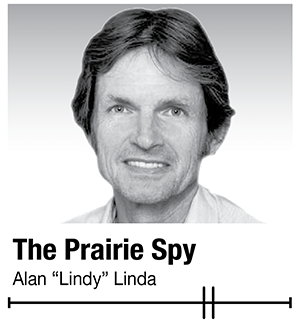From lard to a delicious apple – Ads can mislead
News | Published on October 11, 2021 at 6:31pm EDT | Author: Chad Koenen
0
“Build us an apple,” said the apple industry in the state of Washington many years ago, “that is pretty and has a thick skin so machines can pick it.”
And it was built. It was pretty, indeed. It had a thick skin, indeed. But it tasted like nothing. “Never mind,” said the industry, “we’ll compensate by naming it Delicious. That was how the Delicious apple came into being. Its bad taste? The whole thing was turned over to an advertising agency, who, in a national campaign, coined the slogan: “An apple a day keeps the doctor away.”
And people still believe that saying. Believe that there is some medicinal value in an apple.
The Delicious apple advertising campaign was itself copied after the lard campaign, which was financed by a new company back in the early 1900s who came up with Crisco. They had all this excess cottonseed oil, you see.
My brother and I still talk about that time in the early 1950s when our mother switched from lard to Crisco; from butter to Oley.
For those of you who don’t remember, lard was the shortening of choice. But first, where did the word “shortening” come from. It refers to a process whereby fibers in flour are shortened in length. Long fibers produce bread. Short fibers produce crumbly crusts. Crumbly is much better for pastries.
Lard made great shortening. It was first available to farmers who butchered in the fall and rendered–a purification process, basically–into something that wouldn’t smell so much like pig, and would keep.
In the late 1800s, large scale meat processing plants took over and made lard available to everyone. It was the shortening of choice, available everywhere. At this same time, the cotton industry was trying to figure out what to do with all the cottonseed oil left over from the process used to make fabric. There was a lot of it. They invented Crisco.
The national advertising campaign, to sell it, used a two-pronged attack on lard. First by saying it was bad for you; second by saying Crisco wasn’t. At no time was there any mention that Crisco was made from the cotton plant. Nor that it was due to a new process called hydrogenation. (We now know hydrogenated fats aren’t so good for you.)
America was bombarded with advertising. One was good. One was bad.
Ma bought into it.
And we started complaining, my brother, my dad and I. Our mother, like millions of other mothers, wanted to provide healthy foods to us. We grumbled, like millions of others, but she, like millions of others, stuck to her guns. Only now, many years later, are we learning that lard is actually better for you than hydrogenated fats.
Over the years, there have been several examples of how easily we the public are led.
“Indoor air will cause death and disease. Open all the windows.”
“Indoor toilets will bring death and disease into your house.”
“Fake ice made by machines will bring death and disease.”
“Zippers are dangerous.”
“Mankind should never travel faster than a horse.”
“Radio listening will cause cancer.”
“Television watching will cause cancer.”
“There is scientific evidence that cigarettes are good for you.”
“7-Up is good for babies.”
“Sugar is bad for you. Aspartame is good.”
And perhaps one of the biggest falsehoods ever perpetrated on the American public; one I grew up with on the farm; something we sprayed everywhere, even on a cow’s udders: DDT. And the advertising campaign sponsored by the manufacturers?
“DDT is good for me!”
We sprayed it with such a delightful abandon. In the barn. In the kitchen. Everywhere. I was a young boy. It’s a miracle I’m still alive.

